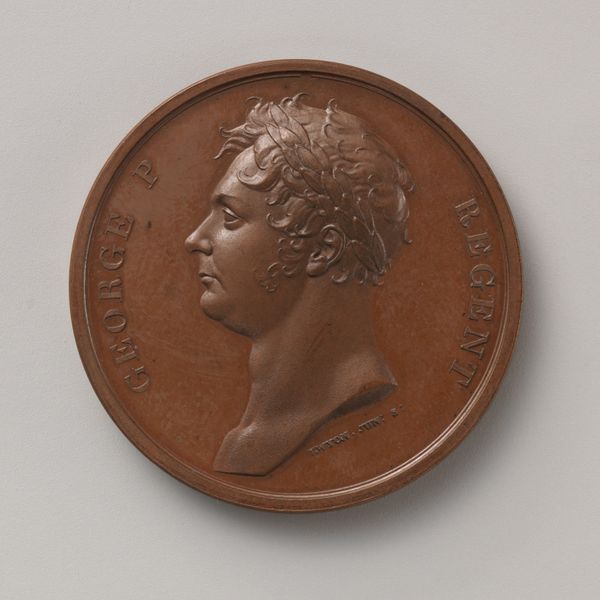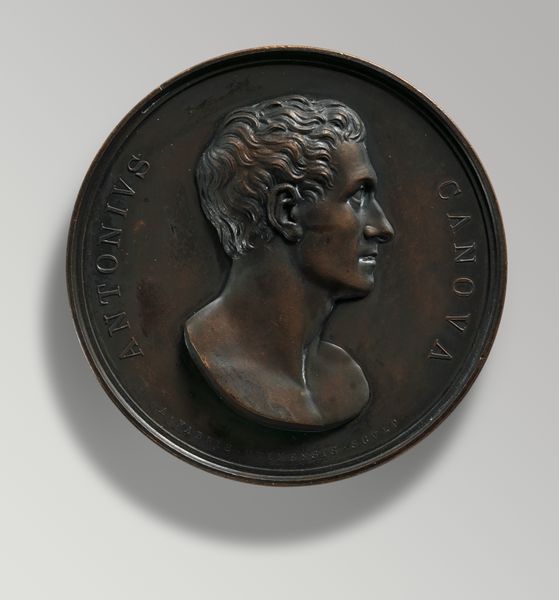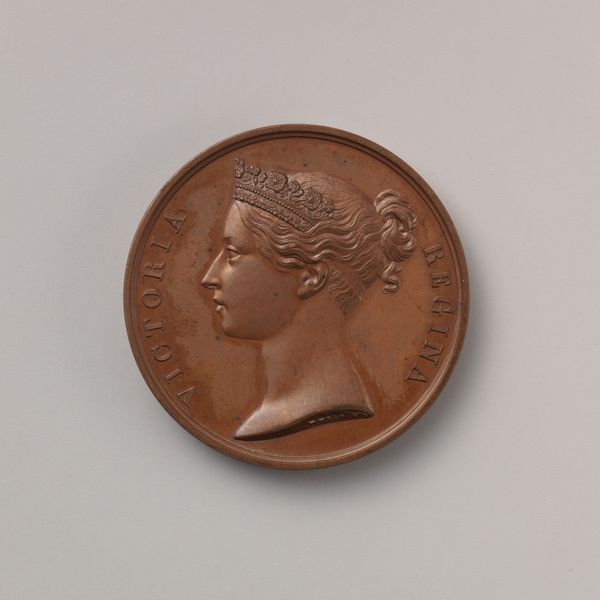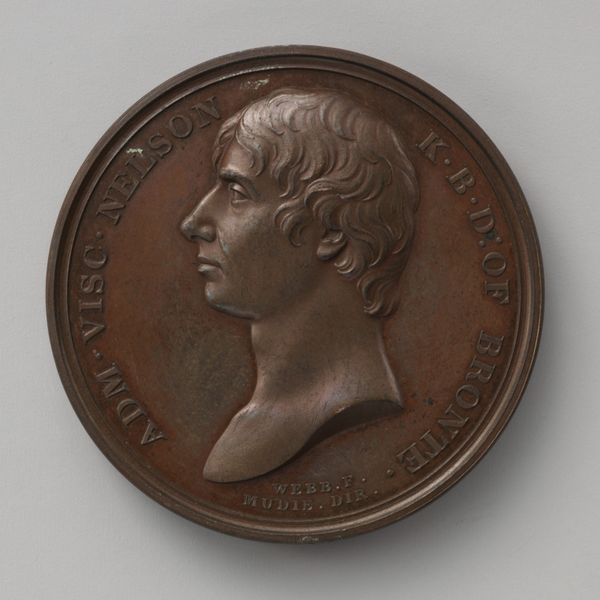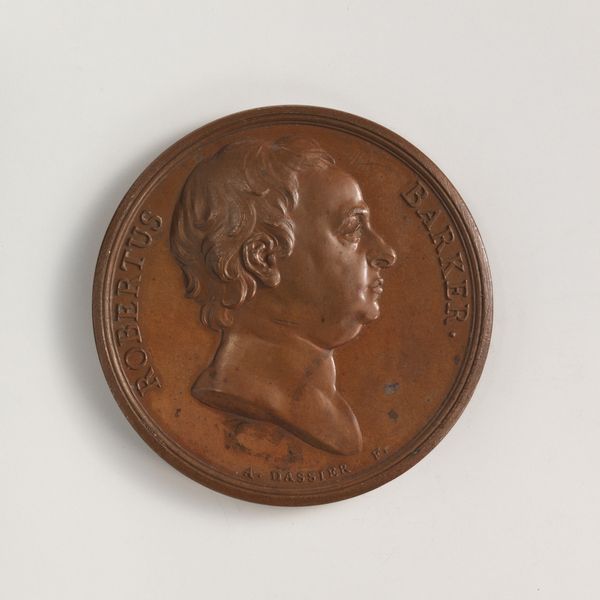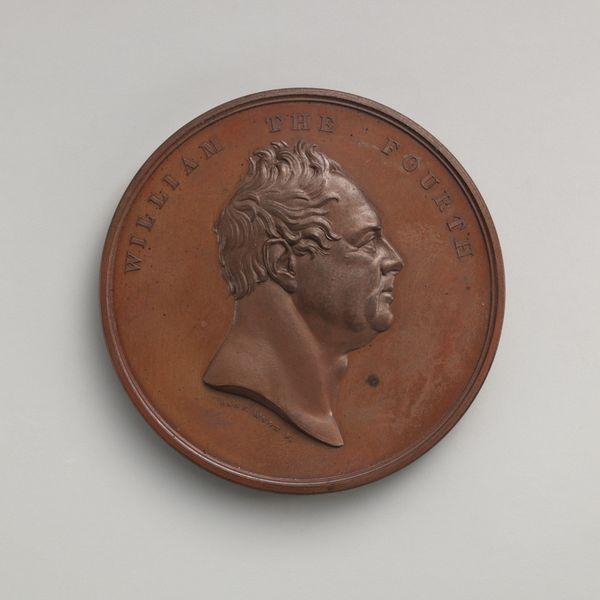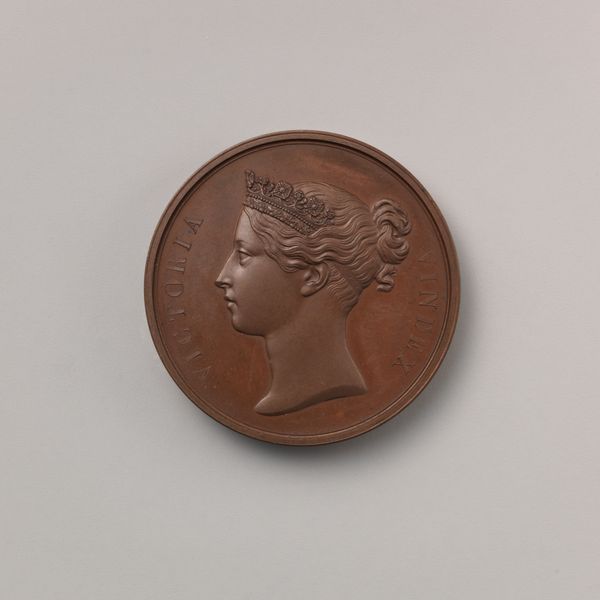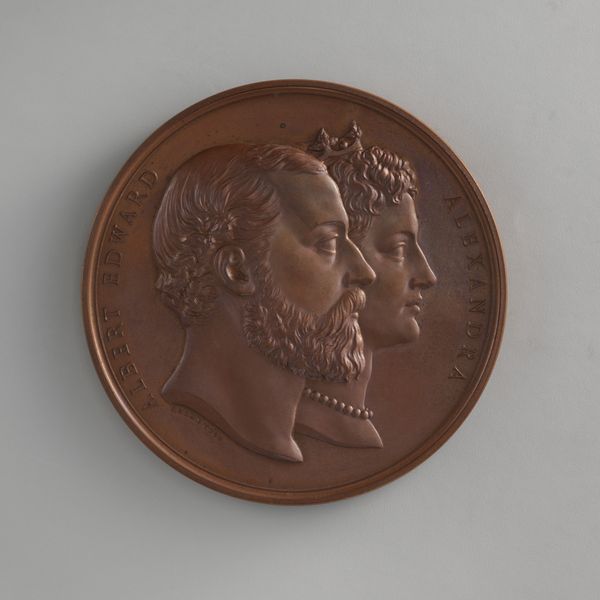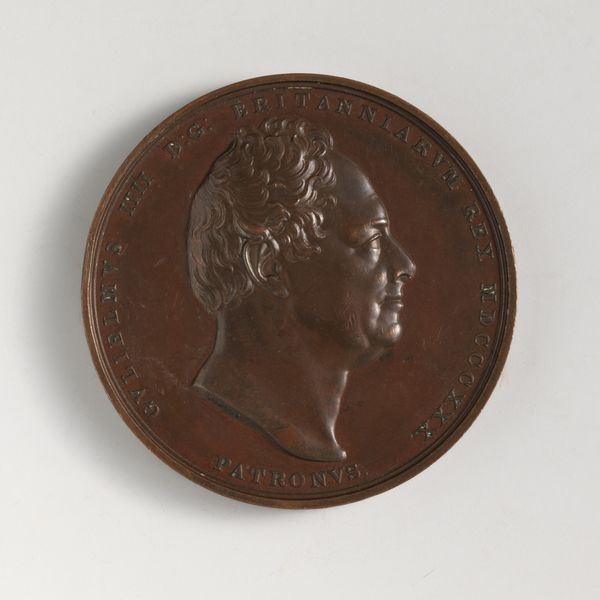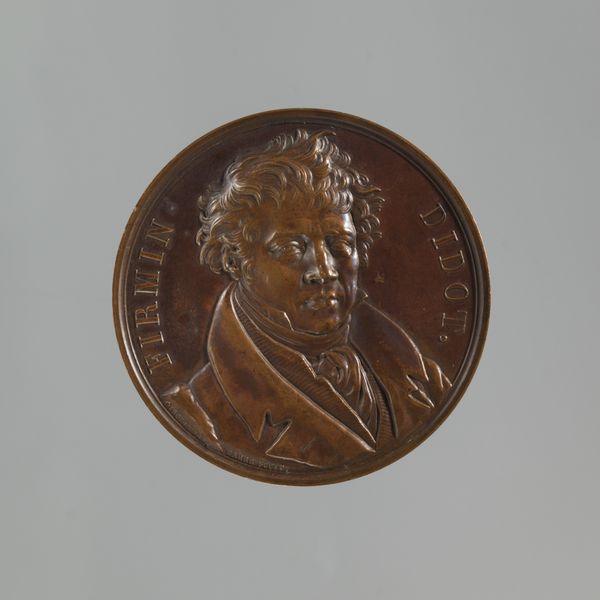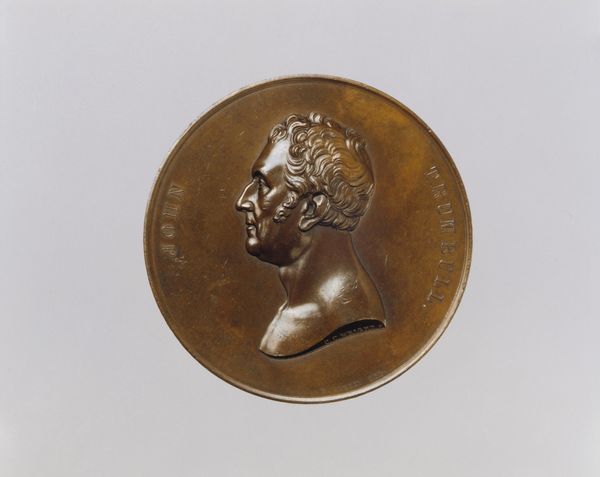
In Honor of the Surgical and Pathological Discoveries of Sir Benjamin Collins Brodie, Bart., Sergeant-Surgeon to George IV, William IV, and Victoria (1783–1862) 1841
0:00
0:00
metal, sculpture
#
portrait
#
metal
#
sculpture
#
classical-realism
#
sculpture
#
romanticism
#
men
#
decorative-art
Dimensions: Diameter: 2 7/8 in. (7.3 cm)
Copyright: Public Domain
Editor: Here we have a bronze sculptural portrait, “In Honor of the Surgical and Pathological Discoveries of Sir Benjamin Collins Brodie...” made in 1841 by William Wyon. It looks like a commemorative medal. What can you tell me about it? Curator: Considering Wyon's production methods reveals insights. Medals like these were products of a very specific set of craft practices within the Royal Mint. Can you see how the labor itself becomes a form of honoring Brodie, embedding him within a system of British industry and value? Editor: So it's not just about Brodie the individual, but also the act of *making* this object that adds meaning? How does that affect the piece overall? Curator: Exactly! Think about the bronze itself: mined, smelted, molded. These processes were intrinsically linked to the booming industries of the time and, of course, colonialism and its exploitative practices. The very materiality speaks to power structures. What's emphasized by its function as currency of reputation? Editor: So, we’re considering bronze not just as material, but as a testament to both honoring someone, and also a larger industrial complex operating behind the scenes. It shows how intricately linked things really are. Curator: Precisely! The object is thus deeply entrenched within systems of patronage, labour, and representation. Wyon’s sculpture provides an enduring object, a circulation of status. Is there anything else about that strikes you now? Editor: That’s fascinating. I'll certainly look at sculptural works differently now!
Comments
No comments
Be the first to comment and join the conversation on the ultimate creative platform.
